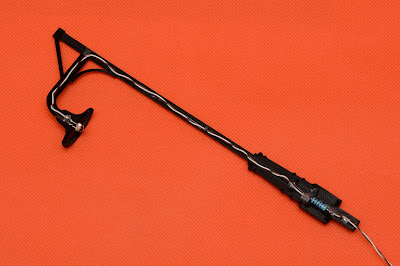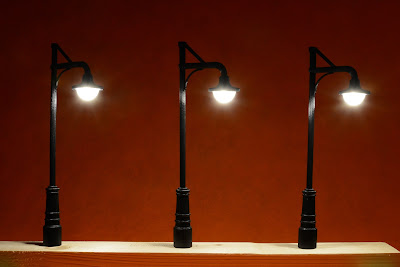Suddenly a TV-set playing in the background shows the following ad:
What was that? I need to learn more!
I spend the evening going through the webpage: elektrycznakolejka.pl. And I finally understand. A company called Eaglemoss is releasing a series of magazines that will come with elements allowing you to build your own 1:87 scale train layout. 100 issues will be published over a period of two years. And the first issue is available now.
Next morning I'm at a magazine stand and it's there. For 4.90 PLN (~1.15 Eur) I can buy the first Electric Train magazine in the series. And it comes with a piece of a track and an H0 scale passenger car. Obviously I bought it immediately!
And since issue #1 was so cheap, I bought 3 pieces instead of 1. No matter how bad it was going to be, it had to be worth 1 Eur!
Let's take a look at the content...
The back side of the package shows the predicted outcome of the build. I understand this is what I'll be able to create using the parts from all the magazine issues combined together. There's clearly some inconsistency here, since the picture shows two locomotives, and I'm pretty sure I can get only one.
The layout looks simple but it's nice and colorful. It measures 105 x 174 cm.
Here's the H0 scale passenger car included in the set and the straight piece of a track. The coach looks very generic - I guess they design and manufacture just one model and release it across all the countries.
One thing that we can definitely say about the track piece is that it was made in China. It doesn't look great but it's not completely crappy either. The pieces connect well enough, although you have to pay attention to what you're doing, since the rails are neither 100% straight nor flat.
We can say even less about the car, since it has no markings at all. The wheels are made of plastic, and I think we can safely assume it was made in China, too.
The couplers work well and the cars can be connected and disconnected easily. They roll pretty well, too, considering they were 1 Eur each.
They're also compatible with cars from other manufacturers. No issues spotted here.
In general the car is not as bad as I thought it would be. It's nowhere near German models quality and it's made of a much cheaper plastic. But the overall feeling is pretty good (considering the price!).
Here's what the coach is made of:
About the magazine itself. I have to say this is the biggest disappointment, since issue #1 has almost no content at all!
It mainly focuses around advertising how great the entire collection is going to be...
...what we'll find in the next issue...
...why we should subscribe to receive each issue by mail...
...why we should subscribe to the premium option...
...and what we can do instead, if we don't subscribe.
The real content is a description of a V40 locomotive...
...and a poster featuring that engine.
There's also a historical article about trains in Poland. The nice thing is it features a photo of the main train station in my hometown.
No modelling tips? No good advices? No basic landscaping techniques? I really hoped (and still hope) for more!
Let's try to analyze whether collecting all the issues makes sense at all. Cost wise we're looking at:
- Issue #1: 4.90 PLN
- Issue #2: 14.99 PLN
- Remaining 98 issues: 29.99 PLN each
Is it worth it? I'd say that depends...
If you're serious about building a layout, you should really spend more and go for well-recognized brands. The collection started with cheap Chinese parts and will most probably continue with those. And I'm really worried what the locomotive will be like...
But if you're not so serious, and you just want to enjoy it together with your kids without fully committing to the hobby, it might be just for you. The Chinese elements included in the first set are good enough for that, and unless the collection takes a wrong turn, the final layout might actually work pretty well.
I have subscribed. I'm curious what it will be like. H0 is not even my scale, so I'm not treating it that seriously. But I really hope to learn something new on the way, and if the collection does not deliver this sort of experience, I can always quit...


















































